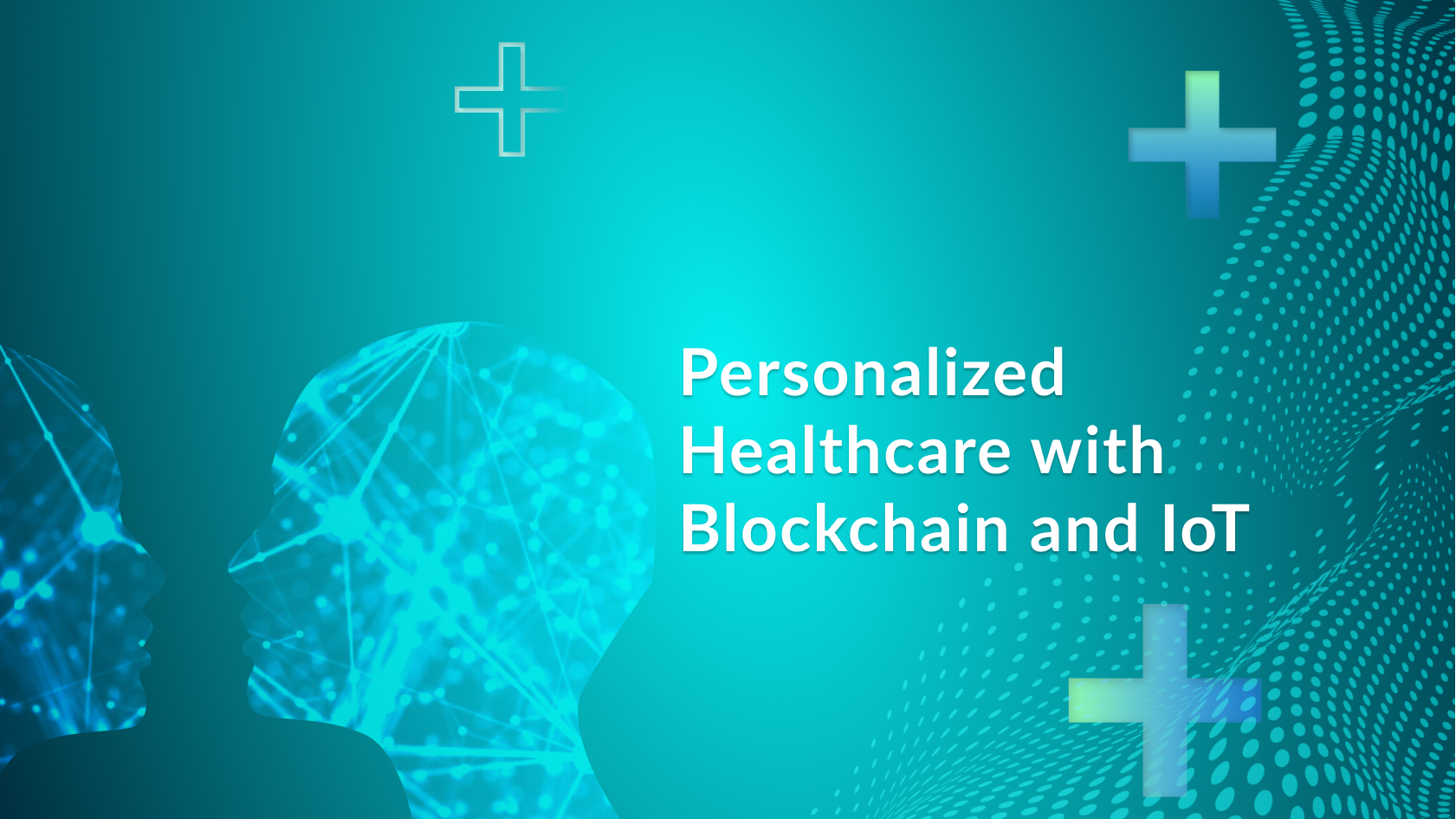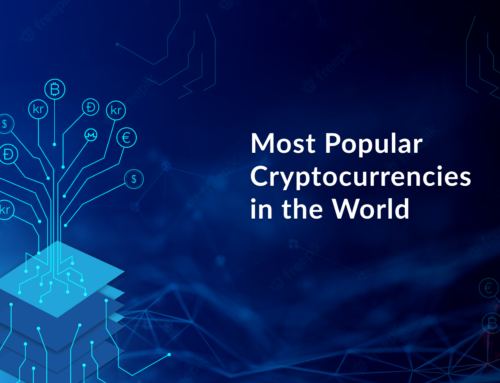The Healthcare industry is one of the most crucial industries in the world. It involves people from many different backgrounds and serves every individual across the globe. It is essential not only for critical ailments, diseases, pandemics, etc. but it is also needed for everyone to stay healthy, and maintain a good standard of living. In other terms, progress in this industry directly influences the quality of life of people. Implementing Blockchain and IoT in Healthcare can bring radical changes and innovations in how this industry operates.
Utilizing Blockchain and IoT will influence many standard operating procedures, and new opportunities for better healthcare will emerge. Moreover, it will also aid in preventive healthcare, which will improve every individual’s standard of living. These technologies can bring a lot of new beneficial changes to this industry.
Healthcare providers are now starting to see the potential benefits of blockchain, and how it can be used to improve their operations. Blockchain-enabled IoT networks are the future of health care, as they will provide a secure and reliable way to manage data and create a holistic understanding of a patient’s health. To achieve the potential of personalized healthcare, organizations all around the world are now exploring Personal Digital Twins. This blog is a discussion of how the healthcare industry is using blockchain and IoT to improve its personalized healthcare offerings.
What Is Blockchain?
Blockchain is a decentralized ledger that records and stores transaction data across a peer-to-peer network. It is a distributed database that is constantly being synchronized across the nodes in a network. It can reduce fraud and errors and is a natural fit for the healthcare industry. Bringing this technology into healthcare will ensure better data security and data integrity, thereby improving the quality of standard practices in this domain.
Blockchain can enhance the security and efficiency of the healthcare system by integrating advanced Healthcare CRM Software, ensuring a more robust and streamlined infrastructure.
How Do They Work Together?
The use of blockchain in healthcare allows for a secure, tamper-proof way to store patient data. It is important as it ensures that only authorized individuals have access to sensitive information. Additionally, IoT devices can collect data about patients in real time, which can be stored in the blockchain. This data can be used to improve patient care and outcomes.
Use Cases in Healthcare
Blockchain can help create a more secure and efficient healthcare system. This is done by streamlining data sharing between patients, doctors, and insurance companies. For example, patient medical records could be stored on a blockchain. This would allow authorized parties to access them quickly and securely. Also, prescriptions could be electronically sent to pharmacies using blockchain technology. Doing so would help reduce errors and improve patient safety.
IoT devices can also be used in healthcare to monitor patients remotely, collect data on patient health, and even provide care in some cases. For example, wearable IoT devices can track a patient’s heart rate and send alerts to their doctor if something appears wrong.
Personal Digital Twins and the Promise of Personalized Health
Personal Digital Twins are the next big thing in personalized health. In a world where every individual is empowered to collect data about themselves and their environment, the Personal Digital Twin can take that data and use it to provide the individual with personalized health insights.
Health care professionals are beginning to explore the potential of personal digital twins, which is a digital representation of a person’s health. They have the potential to revolutionize the way we manage and monitor health and wellness.
Personalized health technology (PHT) has been used for several years to improve the quality and safety of medical care. This is done through the use of electronic health records (EHRs), clinical decision support systems (CDSS), and so on. Yet, these technologies have limitations to give accurate diagnoses based on patient data alone.
Furthermore, different techniques can be used to monitor the spread of viruses and identify habits that increase exposure. The 2020 pandemic is being monitored by organizations, through social media. This is done by using big-data analytics. While social media can be utilized as a sensor, its level of sensitivity and resolution is not ideal. Thus, personal digital twins (PDTs) can be useful in this regard.
The main advantages of PDTs can be summarized as follows:
-
Self-Generation of Alerts:
The auto-generation of alerts allows people to be more aware of a possible critical situation. This means that if there is an emergency, people will be alerted and have the opportunity to take the necessary precautions.
-
Widespread Analytics:
Widespread Analytics is a term used to describe the ability to analyze and make predictions on a wide range of data. It is the latest trend in business intelligence. This is a huge advantage because it allows for the data to be collected and analyzed more efficiently. Analytics across a large community help anticipate a significant spread.
-
Clearer Focus & Lower Cost of Service:
Explicit focus leads to fewer widespread restrictions, low risk, and more robust restrictions in high-risk areas. With more focused restrictions, the economic impact can be reduced. Medical procedures would be more precise and less expensive. The utilization of expensive equipment could be optimized, leading to lower costs of service.
-
Greater Adaptability & Better Resource Utilization:
Personal digital twins are adaptable. It is an emerging technology that is being created to mimic a person’s digital presence. This makes the solution more dynamic and allows individuals to react according to the situation in context. It also leads to efficient use of resources, where data-driven decisions can help in prioritizing emergencies based on the criticality of the situation.
-
Personal Awareness:
Personal Digital Twins enable greater personal awareness and prompt behavior appropriate to the situation. They are a digital representation of your personality that automatically collects and interprets data from your online and offline activities. This data is then used to provide you with personalized advice, insights, and recommendations.
-
Reduced Effort & Faster Triage:
The concept of a Personal Digital Twin (PDT) is designed to monitor the health and well-being of an individual. This allows for a more streamlined, automated process which reduces manual monitoring efforts. Individuals can now gain access to necessary support services more appropriately through cyberspace with help of personal digital twins. For faster triage, a digital twin can provide a representation of a person’s identity, as well as access to data.
-
Service Development:
The development of services aimed at infected individuals has been a difficult process for many healthcare providers, but the idea of creating virtual groups or communities for these individuals may help to make the process much easier. Personal Digital Twins aids in the development of services for these people by creating virtual groups or communities for them. This is done by tracking the individual’s data and then using it to generate personalized care plans for the individual.
Considerations When Implementing Blockchain/IoT
- IoT devices have the potential to collect a wealth of health data. But this data is only useful if it can be properly stored, analyzed, and interpreted. Proper data management systems need to be placed to gain the best advantage of the datasets.
- Though Blockchain/IoT systems can provide a lot of benefits, their implementation needs to be adjusted based on the business requirements. Building solutions to these technologies will need careful planning and coordination between different stakeholders.
- Investing heavily in the first stage of development might be risky. Instead, businesses should focus on validating their assumptions and the benefits they can get from these solutions. Businesses should build Pilot projects to test the feasibility of a blockchain/IoT system before full-scale implementation.
Conclusion
Blockchain and IoT are two technologies that have the potential to revolutionize the healthcare industry. With the use of these technologies, patients will have more control over their medical records and be able to give consent for their data to be used for research. Blockchain will also allow for a more transparent supply chain for medical devices and drugs. The use of blockchain in healthcare will help patients have more control over their medical data, which will reduce the amount of time spent on administrative work.
Using these technologies will improve the work quality of many standard operating procedures, and improve process efficiency. These two technologies have the potential to transform the healthcare industry. This transformation will be a boon for the industry as it will reduce costs and allow for better data management.
You may also like:
Is This the Age of the Digital Health Economy?
Security Implications of Developing Mobile Healthcare Applications








Leave A Comment